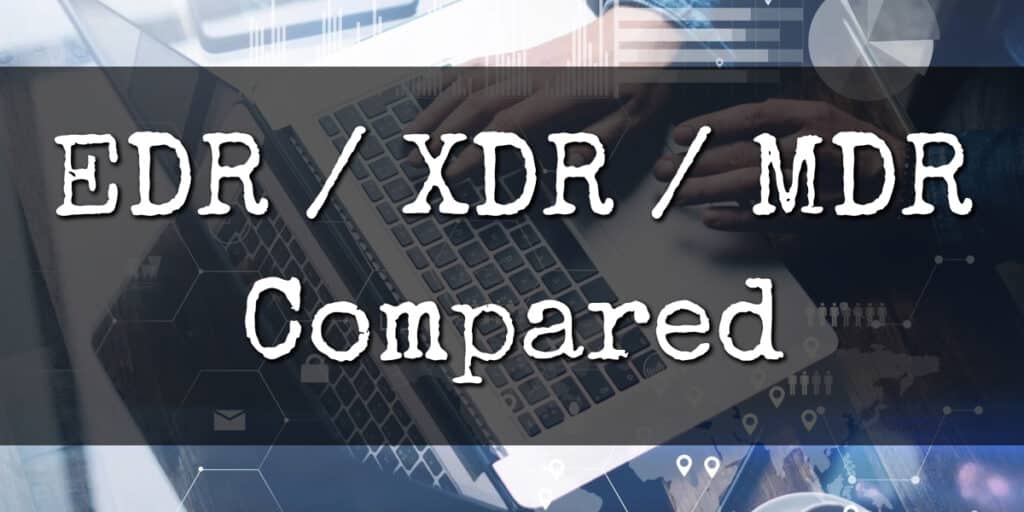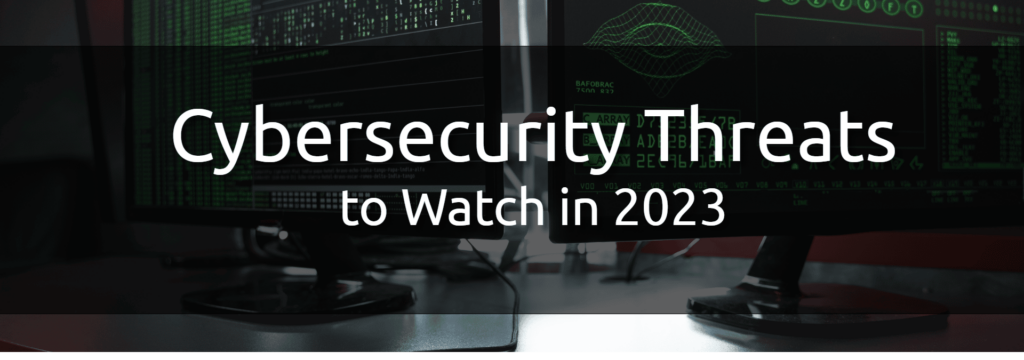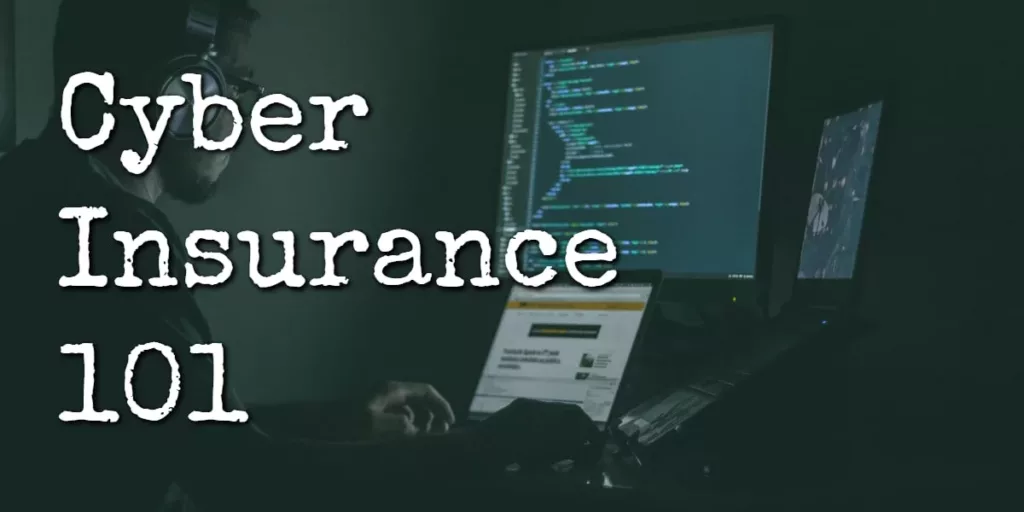Imagine you’re walking through a dark forest, trying to protect your precious cargo from lurking predators. Your flashlight only illuminates a small area, leaving you vulnerable to attacks from all sides. This is how many businesses feel when trying to protect their digital assets from cyber threats. But, what if you could have a more powerful flashlight that shines across the entire forest, revealing hidden dangers and allowing you to respond swiftly?
That’s what Endpoint Detection and Response (EDR), Managed Detection and Response (MDR), and Extended Detection and Response (XDR) solutions can offer your business – enhanced visibility and protection against cyber predators.
In the ever-evolving world of cybersecurity, businesses must stay one step ahead of cyber threats. EDR, MDR, and XDR solutions are designed to detect and respond to advanced threats that have bypassed traditional security measures. But which one is the right fit for your business?
In this article, we’ll explore the differences between EDR vs. XDR vs. MDR, their benefits and limitations, and help you choose the best solution to safeguard your digital assets.
On This Page:
Key Takeaways
- EDR, MDR, and XDR offer different levels of protection depending on an organization’s needs.
- EDR focuses on endpoint security, while MDR provides managed services for threat detection & response, and XDR adds visibility across the whole security landscape.
Understanding EDR, MDR, and XDR

Understanding the unique capabilities of EDR, MDR, and XDR solutions is integral to making an informed decision. All three solutions focus on threat detection and response, with each offering a different level of protection and management for your organization’s cybersecurity needs.
Endpoint Detection and Response (EDR)
Endpoint Detection and Response (EDR) is like your flashlight in the dark forest, focusing on actively monitoring, detecting, and responding to threats on endpoint devices such as laptops, smartphones, and servers. With endpoint detection, you can ensure the security of your devices and network.
EDR solutions provide:
- Real-time visibility into the health of your endpoints
- Capturing all activity
- Using signature-based detection, behavioral analysis, and machine learning algorithms to detect and respond to security threats.
While this proactive approach to endpoint security enables efficient threat handling, it can also generate numerous alerts, necessitating effective management by specialized security teams with threat intelligence.
Managed Detection and Response (MDR)
Imagine getting an extra pair of hands to help you navigate the dark forest. That’s where Managed Detection and Response (MDR) comes in. MDR is a managed service that combines the capabilities of EDR with expert support, offering continuous monitoring, threat detection, and response for organizations that lack in-house security expertise.
Engaging an MDR provider equips you with skilled analysts, proactive threat hunting, and round-the-clock monitoring for network security. However, MDR services can vary in quality and may not go as far as digital forensics.
Extended Detection and Response (XDR)
Extended Detection and Response (XDR) is like switching on floodlights to illuminate the entire forest. XDR extends EDR’s capabilities by:
- Aggregating and analyzing data from multiple security sources
- Providing a unified view of the entire security landscape
- Allowing you to detect and respond to threats faster
- Offering improved cross-domain threat hunting and forensic investigation capabilities from a single console
However, potential compatibility issues with existing security tools may complicate XDR integration.
Key Differences Between EDR, MDR, and XDR
Having explored the fundamentals of EDR, MDR, and XDR, let’s delve into the key distinctions between these solutions. These solutions differ in scope, level of management, and integration with other security tools, each catering to specific organizational needs and resources.
| Feature/Aspect | EDR | XDR | MDR |
|---|---|---|---|
| Scope | Focuses on endpoints like PCs and servers. | Covers a broader range of data sources, including network, cloud, and endpoints. | Similar to EDR but includes human expertise for monitoring and response. |
| Management | Usually self-managed by in-house IT. | Self-managed but may require more expertise due to complexity. | Outsourced; managed by a third-party service. |
| Cost | Moderate; license per endpoint. | Higher due to extended capabilities. | Variable; can be cost-effective for SMBs without in-house expertise. |
| Detection | Primarily automated, based on known signatures and behaviors. | Advanced analytics and correlation across multiple data sources. | Combines technology with human analysis for more accurate detection. |
| Response | Automated responses to known threats. | Automated and customizable responses across different environments. | Tailored responses based on human analysis and business context. |
| Integration | Limited to endpoint security tools. | Integrates with various security tools for a more unified approach. | May integrate with existing security stack but focuses on managed services. |
| Ease of Use | Generally easy to deploy and manage. | More complex; may require specialized skills. | Easiest for SMBs; fully managed service. |
| Compliance | Helps with compliance but limited to endpoint data. | Better for compliance due to comprehensive data. | Compliance support varies by provider; often includes reporting. |
| Scalability | Scalable but may require additional in-house resources. | Highly scalable but complexity increases. | Scalability depends on the service provider. |
| Best For | SMBs with some in-house IT capabilities. | Larger SMBs or those with complex IT environments. | SMBs with limited in-house IT resources or expertise. |
EDR vs. MDR
The main distinction between EDR and MDR lies in their scope and management. EDR focuses on endpoint security, providing a tool for monitoring and detecting threats on endpoint devices.
MDR, on the other hand, is a comprehensive service that bundles EDR capabilities and expert support to bolster threat detection and response capabilities for organizations with limited security expertise.
MDR vs. XDR
MDR and XDR differ in their approach to security management and visibility. MDR offers managed services, taking the burden of network security off your shoulders and providing expert support for threat detection and response.
On the other hand, XDR enhances visibility and detection across the entire security infrastructure by aggregating data from multiple security sources and providing a comprehensive view of the security landscape.
EDR vs. XDR
The primary difference between EDR and XDR is their focus on endpoint protection and integration with other security sources. While EDR concentrates on monitoring, detecting, and responding to threats on endpoint devices, XDR unifies data from multiple security sources, offering a comprehensive view of the entire security landscape and enabling faster detection and response to threats.
Benefits and Limitations of EDR, MDR, and XDR

Each solution has its benefits and limitations, depending on the organization’s needs and resources. Understanding these pros and cons can help you make an informed decision when choosing the right cybersecurity solution for your business.
EDR Benefits and Limitations
EDR offers proactive endpoint protection, allowing companies to find and handle threats quickly and efficiently.
However, the high volume of alerts and endpoint telemetry data generated by EDR may lead to visibility issues, false positives, and prolonged investigation times.
MDR Benefits and Limitations
MDR provides expert support and continuous monitoring, making it an ideal solution for businesses that lack in-house security expertise.
However, the quality of MDR services can vary, and the provided management and support may not always align with the organization’s expectations.
XDR Benefits and Limitations
XDR enhances visibility and detection across the entire security infrastructure, allowing for faster detection and response to threats.
However, potential compatibility issues with existing security tools may complicate XDR integration.
Choosing the Right Solution for Your Business

Selecting the right cybersecurity solution for your organization requires careful consideration of your security needs, evaluation of vendor offerings, and the ability to integrate the chosen solution with existing security tools and your security team.
Here are some steps to help guide you through the decision-making process:
Assessing Your Security Needs
When assessing your security needs, consider your organization’s risk profile, infrastructure, and resources. Evaluate your current security posture, identify vulnerabilities, and determine the steps needed to address any gaps. Detect threats effectively by understanding your organization’s unique landscape and monitoring security events.
Understanding your organization’s unique requirements will help you choose the right solution that aligns with your business objectives and security strategy.
Evaluating Vendor Offerings
Besides assessing your security needs, you should also evaluate the capabilities, reputation, and compatibility of the cybersecurity vendors under consideration. Here are some steps to follow:
- Research and compare vendor offerings.
- Take into account their experience in the security industry.
- Consider customer satisfaction and reviews.
- Look at their track record of keeping promises.
During vendor evaluation, take into account factors such as pricing, scope of services offered, and level of support. Ensure the vendor offers solutions that align with your organization’s requirements and budget constraints. Also, check if the vendor’s solutions can work seamlessly with the security tools you already have in place.
Integrating with Existing Security Tools
Seamlessly integrating your selected cybersecurity solution with existing security tools is key to an efficient and effective security ecosystem. Ensure that the solution you choose is compatible with your current security infrastructure, and that it can enhance your detection and response capabilities without causing disruptions.
As part of the integration process, you should:
- Configure the tools to interact with other security systems and processes
- Test and monitor the integration to ascertain its effectiveness
- Ensure the integration complies with all applicable regulations and is secure
By integrating your chosen solution with existing security tools, you can streamline security data ingestion, accelerate security operations, and rapidly remediate advanced threats.
Summary

EDR, MDR, and XDR solutions offer varying levels of protection and management to suit your organization’s unique needs and resources. EDR provides proactive endpoint security, MDR offers expert support and continuous monitoring, and XDR enhances visibility and detection across the entire security infrastructure.
By assessing your security needs, evaluating vendor offerings, and ensuring seamless integration with existing security tools, you can choose the right cybersecurity solution to safeguard your business from lurking cyber threats.
Remember, just like in the dark forest, having a powerful flashlight or even floodlights can make all the difference when it comes to protecting your precious cargo. Equip your organization with the right detection and response solution, and navigate the ever-evolving cyber landscape with confidence and security.
Frequently Asked Questions
What is the difference between EDR, XDR, and MDR?
EDR provides endpoint security, while MDR is a service offering endpoint security. XDR extends EDR capabilities to protect more than just endpoints, by combining the detection and response capabilities for networks, cloud services, and endpoints into one platform.
What is SIEM, and how does it compare?
While EDR is a monitoring and threat detection tool for endpoints, MDR is a service that manages endpoint security, and XDR extends EDR capabilities across multiple tools and attack vectors, SIEM is used for threat detection, compliance, and incident management. Together, they form the foundation of any cybersecurity strategy.
What factors should be considered when choosing the right cybersecurity solution?
When selecting a cybersecurity solution, take into account your specific needs, the offerings of potential vendors, and how well it integrates with existing systems. Make sure to do your due diligence to choose the right fit for your organization. Read more about choosing an effective cybersecurity strategy for your businesses here.



